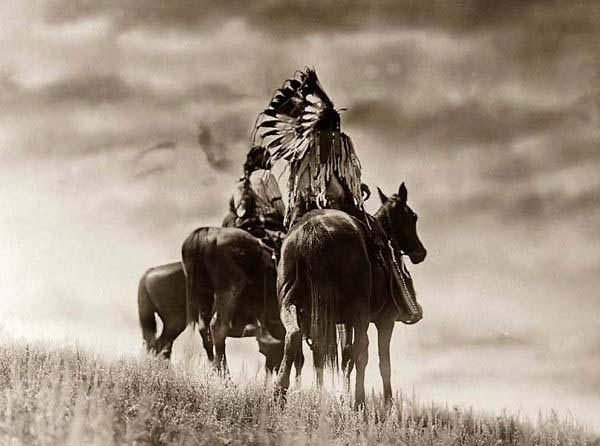About Publications Library Archives
heritagepost.org

Preserving Revolutionary & Civil War History

Preserving Revolutionary & Civil War History

Cheyenne Indians, one of the most westerly tribes of the Algonquian nation. They were seated on the Cheyenne, a branch of the Red River of the North. Driven by the Sioux, they retreated beyond the Missouri. Near the close of the eighteenth century they were driven to or near the Black Hills (now in the Dakotas and Wyoming), where Lewis and Clarke found them in 1804, when they possessed horses and made plundering raids as far as New Mexico.
 About 1825, when they were at peace with the Sioux, and making war upon the Pawnees, Kansas, and other tribes, a feud occurred in the family. A part of them remained with the Sioux, and the others went south to the Arkansas River and joined the Arapahoes. Many treaties were made with them by agents of the United States, but broken; and, finally, losing all confidence in the honor of the white race, they began hostilities in 1861. This was the first time that the Cheyennes were at war with the white people. While negotiations for peace and friendship were in progress, Colonel Chivington, of Colorado, fell upon a Cheyenne village (Nov. 29, 1864) and massacred about 100 men, women, and children. The whole tribe was fired with a desire for revenge, and a fierce war ensued, in which the United States lost many soldiers and spent between $30,000,000 and $40,000,000.
About 1825, when they were at peace with the Sioux, and making war upon the Pawnees, Kansas, and other tribes, a feud occurred in the family. A part of them remained with the Sioux, and the others went south to the Arkansas River and joined the Arapahoes. Many treaties were made with them by agents of the United States, but broken; and, finally, losing all confidence in the honor of the white race, they began hostilities in 1861. This was the first time that the Cheyennes were at war with the white people. While negotiations for peace and friendship were in progress, Colonel Chivington, of Colorado, fell upon a Cheyenne village (Nov. 29, 1864) and massacred about 100 men, women, and children. The whole tribe was fired with a desire for revenge, and a fierce war ensued, in which the United States lost many soldiers and spent between $30,000,000 and $40,000,000.
The ill-feeling of the Indians towards the white people remained unabated. Some treaties were made and imperfectly carried out; and, after General Hancock burned one of their villages in 1867, they again made war, and slew 300 United States soldiers and settlers. General Custer defeated them on the Washita, killing their chief, thirty-seven warriors, and two-thirds of their women and children. The northern band of the Cheyennes remained peaceable, refusing to join the Sioux in 1865.
In 1899 there were 2,069 Cheyennes at the Cheyenne and Arapahoe agency, Oklahoma; 56 at the Pine Ridge agency, South Dakota; and 1,349 at the Tongue River agency, Montana.